
A Comprehensive Guide to the Mountain Pose for Strength and Serenity
In the vast world of yoga, some poses stand as pillars of strength and simplicity, embodying the essence of balance and mindfulness. Tadasana, or Mountain Pose, is one such foundational posture that serves as the starting point for many yoga sequences. Join us as we explore the intricacies of Tadasana, unlocking the benefits it brings to your physical and mental well-being.

The 10 Most Essential Yoga Poses for Runners
Running is an excellent form of exercise that offers numerous physical and mental health benefits, including weight loss, improved cardiovascular health, and stress relief. However, running can be hard on the body, leading to tight muscles and aches, which can impact performance and limit progress. Incorporating yoga into a runner's fitness routine can be an effective way to prevent injury and improve strength and flexibility. In this article, we will explore the 10 most essential yoga poses for runners, including their benefits and tips for getting the most out of your practice.

Discovering the Beauty of Dhanurasana (Bow Pose)
In the poetic flow of yoga, certain asanas stand out for their elegance, strength, and transformative potential. Dhanurasana, or Bow Pose, is one such pose that invites practitioners to embody the beauty of a bow, creating a graceful arch that transcends the physical and touches the realms of the spiritual. Join us on a journey into the enchanting world of Dhanurasana as we explore its beauty and the myriad benefits it offers to both body and soul.


Embarking on the Yoga Journey: 10 Poses Perfect for Beginners
The beauty of yoga lies in its accessibility to practitioners of all levels, offering a transformative journey for both body and mind. If you're just starting on the path to wellness, these 10 beginner-friendly yoga poses are a perfect foundation. Whether you're seeking flexibility, relaxation, or strength, these poses will gently guide you into the world of yoga, fostering a sense of balance, harmony, and well-being.


The Joyful Harmony of Kapalbhati in Vajrasana
Dynamic Bliss: The Joyful Harmony of Kapalbhati in Vajrasana
Introduction:
In the realm of yogic practices, few exercises embody the essence of vitality and inner joy as seamlessly as Kapalbhati in Vajrasana. This dynamic combination not only revitalizes the body but also infuses the mind with a sense of clarity and lightness. Join us on a journey into the uplifting world of Kapalbhati in Vajrasana as we explore the joyful harmony it brings, the transformative power of breath, and the holistic well-being it offers to practitioners.
### **Embarking on the Dynamic Bliss of Kapalbhati in Vajrasana:**
Kapalbhati, often referred to as the "shining skull" technique, is a powerful breathing exercise that, when practiced in Vajrasana (Thunderbolt Pose), creates a symphony of vitality and joy. Let's delve into the reasons why this combination is a source of dynamic bliss in the world of yoga.
### **1. **Energizing the Body:**
Kapalbhati involves forceful exhalations and passive inhalations, creating a rapid exchange of oxygen and carbon dioxide. This dynamic breathing pattern floods the body with fresh oxygen, energizing every cell and revitalizing the entire system.
### **2. **Stimulating the Nervous System:**
The rhythmic force of Kapalbhati stimulates the sympathetic nervous system, promoting alertness and a heightened sense of awareness. This activation contributes to improved concentration and mental clarity.
### **3. **Cleansing and Detoxification:**
The forceful exhalations in Kapalbhati act as a natural detoxifier, expelling stale air and impurities from the lungs. This cleansing action supports respiratory health and helps remove toxins from the body.
### **4. **Activating the Manipura Chakra:**
Kapalbhati, when practiced in Vajrasana, activates the Manipura Chakra, also known as the solar plexus chakra. This energy center is associated with vitality, self-confidence, and joy, creating a profound sense of well-being.
### **5. **Improving Digestion:**
The rhythmic contractions of the abdominal muscles during Kapalbhati massage the digestive organs, promoting healthy digestion. This can be particularly beneficial for individuals dealing with digestive issues.
### **6. **Enhancing Lung Capacity:**
The forceful exhalations in Kapalbhati enhance lung capacity and respiratory efficiency. This can be beneficial for individuals looking to improve their overall respiratory function.
### **7. **Creating Mental Clarity:**
The combination of breath control and the meditative posture of Vajrasana fosters mental clarity and a calm mind. Practicing Kapalbhati in Vajrasana can be a refreshing and uplifting experience, leaving the mind clear and focused.
### **8. **Accessible for Most Practitioners:**
Kapalbhati in Vajrasana is accessible for most practitioners, regardless of age or fitness level. The seated posture provides stability and comfort, allowing individuals to focus on the dynamic breath work.
### **Conclusion:**
Kapalbhati in Vajrasana, with its dynamic bliss and transformative breath, is a beacon of vitality in the practice of yoga. As you engage in this dynamic combination, may you tap into the wellspring of joy within, revitalizing both body and mind. Let Kapalbhati in Vajrasana be a celebration of breath, a dance of vitality, and a pathway to inner radiance. In the rhythmic exchange of oxygen and carbon dioxide, may you discover the boundless joy that lies in the heart of the shining skull technique.

Diving into Serenity
Diving into Serenity: Understanding the Essence of Ardha Kurmasana
Introduction:
In the vast ocean of yoga, each asana holds its own unique beauty and wisdom. Ardha Kurmasana, or Half Tortoise Pose, is one such gentle yet profound posture that invites practitioners to explore stillness, introspection, and the subtle nuances of the breath. Join us as we dive into the serenity of Ardha Kurmasana, unraveling its essence and uncovering the transformative benefits it offers for both body and mind.
### **Embarking on the Journey of Ardha Kurmasana:**
Named after the Sanskrit words "ardha" (half), "kurma" (tortoise), and "asana" (pose), Ardha Kurmasana reflects the essence of a tortoise withdrawing into its shell. Let's embark on a journey to understand the subtleties and depth that this pose brings to the yoga practice.
### **1. **Gentle Stretch for the Spine:**
Ardha Kurmasana involves a forward fold that gently stretches the spine, releasing tension and promoting flexibility. The pose encourages lengthening from the tailbone to the crown of the head, fostering a sense of space and elongation.
### **2. **Deep Opening for the Shoulders:**
The extended arms in Ardha Kurmasana create a deep opening for the shoulders. This can be particularly beneficial for individuals dealing with tightness or discomfort in the shoulder and upper back area.
### **3. **Quietens the Mind:**
The forward folding nature of Ardha Kurmasana encourages introspection and a turning inward. The pose provides a moment of stillness, allowing the mind to quieten and find a sense of calm amidst the busyness of daily life.
### **4. **Encourages Diaphragmatic Breathing:**
As the chest and abdomen gently press against the thighs in Ardha Kurmasana, practitioners are prompted to engage in diaphragmatic breathing. This deep, abdominal breath can enhance respiratory function and induce a calming effect on the nervous system.
### **5. **Stimulates the Abdominal Organs:**
The forward fold stimulates the abdominal organs, promoting gentle massage and aiding in digestive function. Ardha Kurmasana can be a supportive pose for individuals seeking relief from digestive discomfort.
### **6. **Enhances Hip Flexibility:**
The posture involves a mild stretch for the hips, contributing to improved hip flexibility. This can be particularly beneficial for those with sedentary lifestyles or individuals looking to release tension in the hip area.
### **7. **Accessible for Various Levels:**
Ardha Kurmasana is accessible for practitioners of different levels of flexibility. The pose can be modified with the use of props to provide support, making it inclusive for a wide range of individuals.
### **8. **Fosters Mind-Body Connection:**
The gentle nature of Ardha Kurmasana encourages practitioners to cultivate a deeper connection between body and mind. The focus on breath and mindful awareness creates a harmonious union, fostering a sense of presence in the moment.
### **Conclusion:**
Ardha Kurmasana, with its gentle embrace and reflective qualities, is a testament to the richness that yoga offers. As you delve into the subtleties of this pose, may you discover the serenity it brings, inviting you to connect with your breath, delve into stillness, and experience the transformative power of mindful movement. Let Ardha Kurmasana be a guide on your journey to inner peace, reminding you that in the quiet depths of yoga, profound wisdom and serenity await.

Breathing for Better Health
Breathing for Better Health: Pranayama Practice Guide with Benefits, Tips, and Precautions Explained
Pranayama is a fundamental practice in yoga that involves controlled breathing techniques to help reduce stress, improve relaxation, and promote overall well-being. Pranayama can be helpful for individuals of all ages and fitness levels, making it a versatile technique to promote better health. In this article, we will explore how to practice pranayama, its benefits, tips, and precautions to keep in mind.
How to Practice Pranayama:
1. Sit comfortably in a quiet space with your back straight.
2. Take a deep breath in through the nose and slowly exhale through the mouth.
3. Start to focus on your breath, inhaling and exhaling slowly and deeply.
4. Start to implement techniques such as alternate nostril breathing, kapalabhati, or ujjayi breathing.
5. Practice pranayama for a few minutes each day, gradually increasing the length of time as you become more comfortable with the practice.
Benefits of Pranayama:
1. Reduces stress: Pranayama helps to regulate the breath and calm the nervous system, which can reduce stress and anxiety.
2. Improves digestion: Certain pranayama techniques, such as kapalabhati, can help to improve digestion and elimination.
3. Enhances overall well-being: Practicing pranayama regularly can promote relaxation, mental clarity, and well-being.
4. Improves lung function: Pranayama can help to increase lung capacity and strengthen the respiratory system.
5. Lowers blood pressure: Pranayama has been shown to help lower blood pressure, reducing the risk of cardiovascular disease.
Tips for Practicing Pranayama:
1. Start Slow: Don't push yourself too hard when first learning pranayama. Start with shorter practice sessions and gradually increase the length as you become more comfortable with the technique.
2. Be Mindful: Focus on your breath and be mindful of any sensations or changes. This can help to strengthen your concentration and improve the effectiveness of the practice.
3. Stay Consistent: Regularly practicing pranayama is key to reaping the full benefits of the practice. Try to practice at the same time each day to build a consistent habit.
Precautions for Practicing Pranayama:
1. Consult with your doctor: Pranayama should be avoided or modified if you have any medical conditions, such as lung or heart disease.
2. Don't push too hard: If you feel light-headed, dizzy, or uncomfortable while practicing pranayama, slow down or stop.
3. Practice on an empty stomach: Pranayama is best practiced on an empty stomach, typically in the morning before breakfast.
4. Avoid practicing in noisy environments: Find a quiet space to practice pranayama, free from distractions or external noise.
In conclusion, pranayama is a simple yet effective practice that can bring numerous benefits to your physical and mental well-being. By incorporating pranayama into your regular yoga practice, you can calm your mind, reduce stress, improve digestion, and enhance overall well-being. So take a deep breath, focus on your breath, and start to experience the benefits of pranayama for better health.

Best Asanas for Fertility
Boost Your Reproductive Health with Yoga: Best Asanas for Fertility
Yoga has been practiced for thousands of years and is known to provide numerous health benefits, from improved flexibility to stress reduction. However, did you know that yoga can also have a positive impact on your reproductive health? In fact, yoga has been found to be an effective tool for boosting fertility in both men and women. In this article, we will explore some of the best yoga asanas to improve your reproductive health and increase your chances of conception.
1. Baddha Konasana (Butterfly Pose)
Butterfly pose is a gentle asana that helps to stretch the inner thighs and groin, while also stimulating the reproductive organs. To perform this pose, sit on the floor with your legs extended in front of you. Bend your knees and bring the soles of your feet together. Use your hands to gently press your feet towards your body, creating a diamond shape with your legs. Keep your spine straight and breathe deeply for several minutes.
2. Paschimottanasana (Seated Forward Bend)
Seated forward bend is another great pose for improving reproductive health. It helps to stimulate the ovaries and uterus in women, and the prostate gland in men. To perform this pose, sit on the floor with your legs extended in front of you. Slowly bend forward and reach for your toes, keeping your back as straight as possible. Breathe deeply and hold the pose for several minutes.
3. Setu Bandhasana (Bridge Pose)
Bridge pose is a gentle backbend that helps to stimulate the reproductive organs. To perform this pose, lie on your back with your knees bent and feet flat on the floor. Lift your hips up towards the ceiling, keeping your arms and shoulders on the floor. Breathe deeply and hold the pose for several minutes.
4. Supta Baddha Konasana (Reclining Butterfly Pose)
Reclining butterfly pose is a gentle, restorative pose that helps to open up the hips and pelvis. To perform this pose, lie on your back with the soles of your feet together and your knees bent out to the sides. Place a yoga block or bolster underneath your knees for support. Close your eyes and breathe deeply for several minutes.
5. Ardha Matsyendrasana (Half Lord of the Fishes Pose)
Half lord of the fishes pose is a twisting pose that helps to massage the internal organs, including the reproductive organs. To perform this pose, sit on the floor with your legs extended in front of you. Bend your right knee and place your foot on the outside of your left thigh. Twist your torso to the right, placing your left elbow on the outside of your right knee. Breathe deeply and hold the pose for several minutes, then switch sides.
In addition to these asanas, there are several other ways that yoga can help to boost your reproductive health. Regular yoga practice can help to reduce stress and promote relaxation, which can be beneficial for both male and female fertility. Yoga can also help to regulate the menstrual cycle in women and improve sperm count and motility in men.
In conclusion, if you're looking to boost your reproductive health and increase your chances of conception, yoga can be an effective tool. By incorporating these asanas into your regular yoga practice, you can improve blood flow, stimulate the reproductive organs, and promote overall health and well-being. So grab your yoga mat and start practicing today!


Embracing the Twist for Inner Harmony
In the rich tapestry of yoga, Ardha Matsyendrasana, or Half Lord of the Fishes Pose, stands out as a pose that offers a unique blend of physical benefits and inner harmony. This seated spinal twist not only nourishes the spine and internal organs but also holds a key to unlocking energy and balance within the body. Join us on a journey into the significance of Ardha Matsyendrasana as we explore its importance, the transformative power of spinal twists, and the holistic well-being it brings to practitioners.
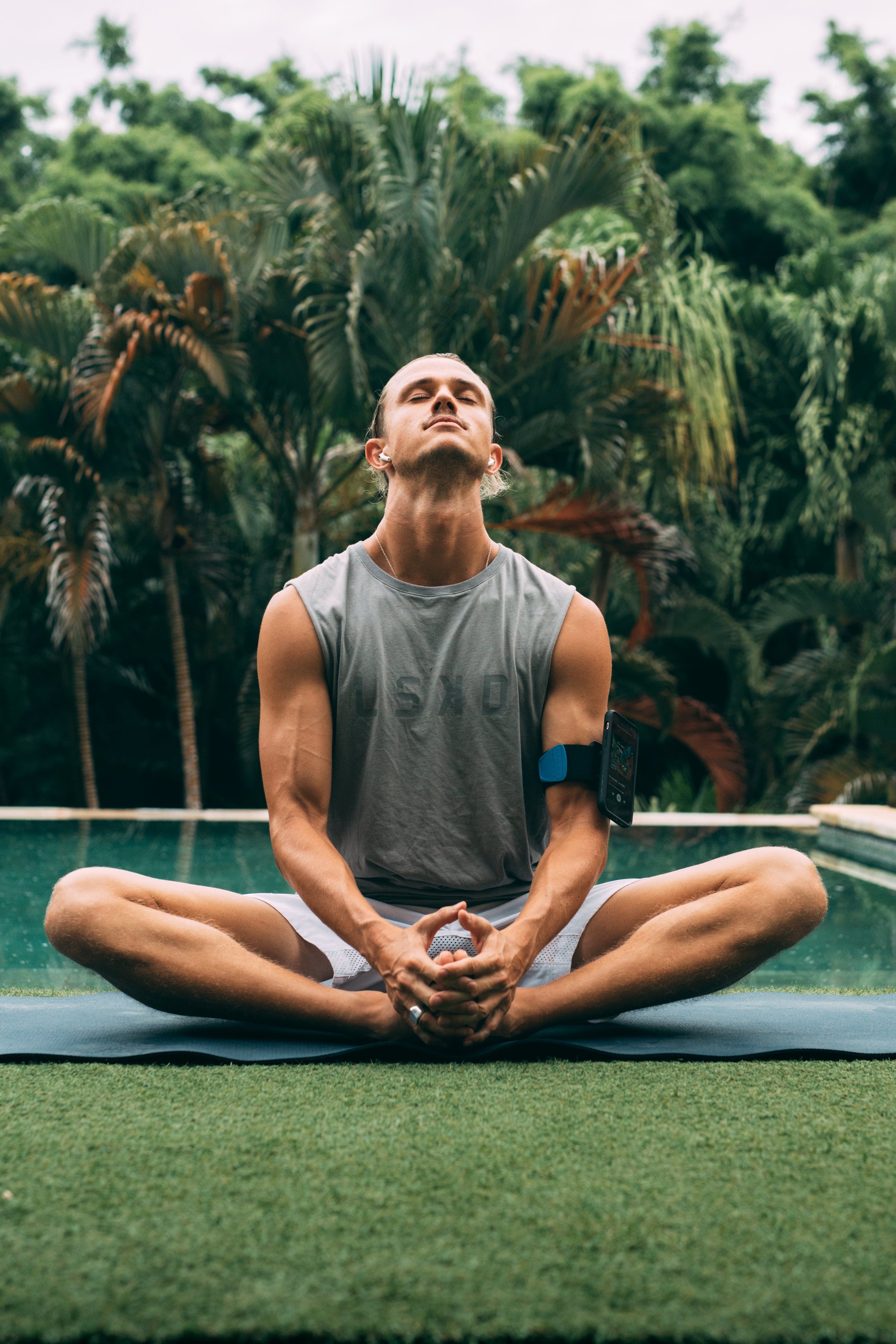
10 Poses Perfect for Beginners
The beauty of yoga lies in its accessibility to practitioners of all levels, offering a transformative journey for both body and mind. If you're just starting on the path to wellness, these 10 beginner-friendly yoga poses are a perfect foundation. Whether you're seeking flexibility, relaxation, or strength, these poses will gently guide you into the world of yoga, fostering a sense of balance, harmony, and well-being.
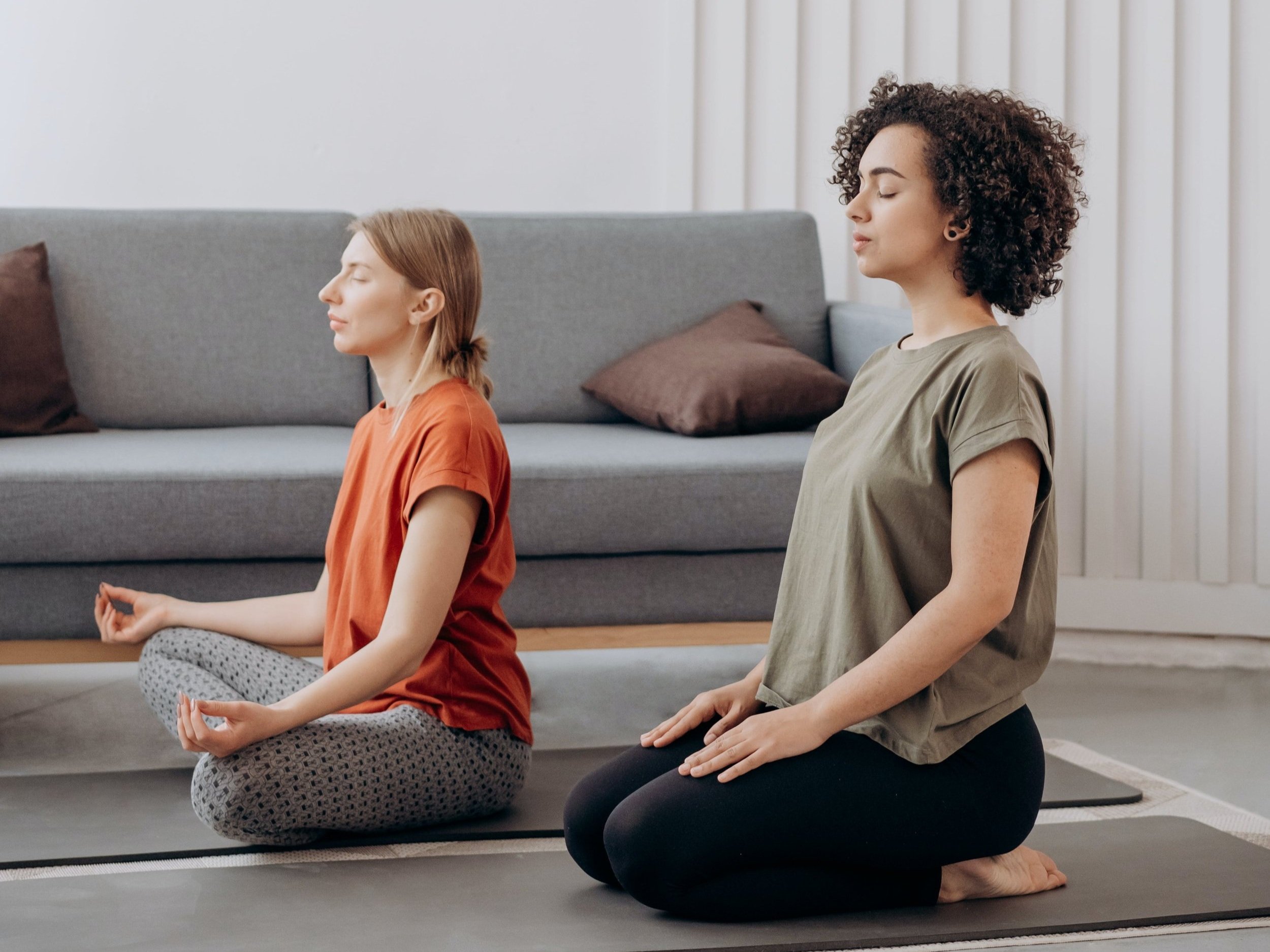
Unveiling the 15 Health Benefits of Practicing Yoga
In a world that often feels fast-paced and demanding, the ancient practice of yoga emerges as a sanctuary for holistic well-being. Beyond its physical postures, yoga offers a profound journey that encompasses the mind, body, and soul. If you've been contemplating stepping onto the yoga mat, this blog post explores 15 compelling health benefits that might just inspire you to make yoga a part of your daily routine.
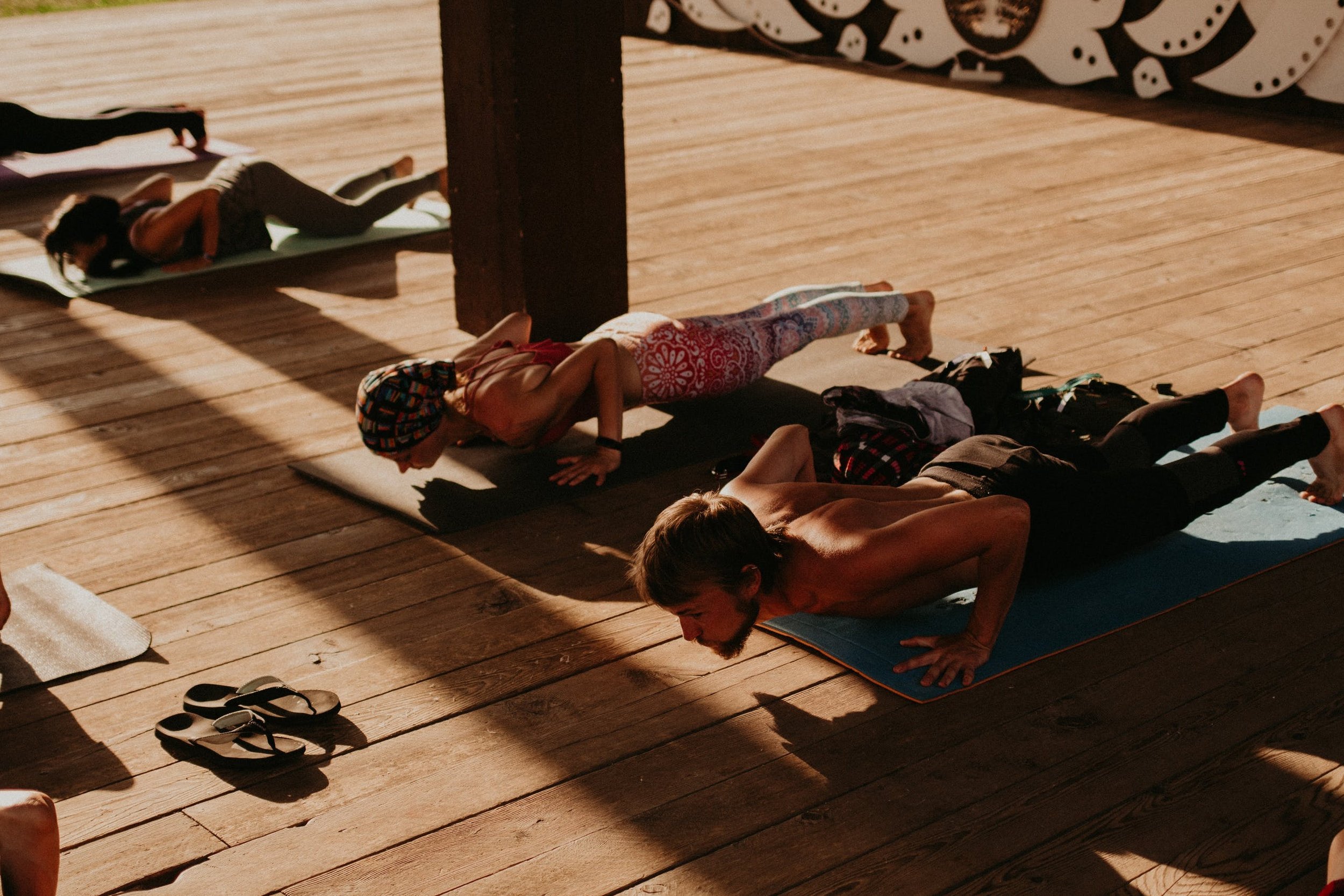
How Yoga Can Lengthen Your Lifespan and Enhance Your Well-Being
In the pursuit of a long and fulfilling life, the ancient practice of yoga emerges as a timeless companion. Beyond the physical postures, or asanas, lies a holistic approach to well-being that can positively impact the length and quality of your life. In this blog post, we'll explore how the practice of yoga, with its unique blend of physical, mental, and spiritual elements, has the potential to extend your lifespan and enhance your overall health.
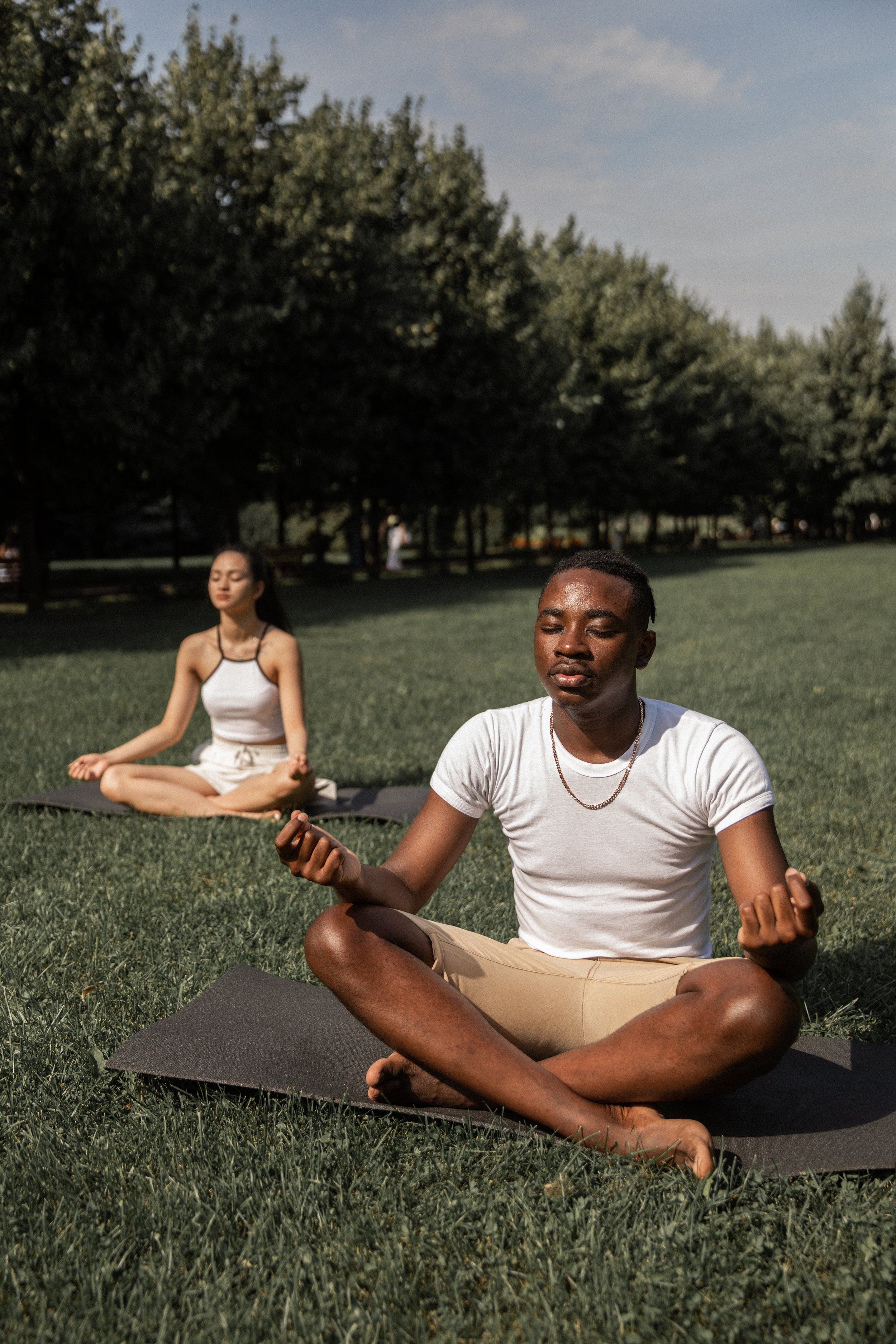
7 Ways Yoga Nurtures Your Mental Well-Being
In the realm of holistic well-being, yoga emerges as a powerful ally for mental health. Beyond its physical benefits, the ancient practice of yoga encompasses a transformative journey that nurtures the mind, promoting mental clarity, resilience, and emotional balance. In this blog post, we'll explore seven ways in which yoga serves as a balm for your mental health, offering a sanctuary for tranquility and inner harmony.
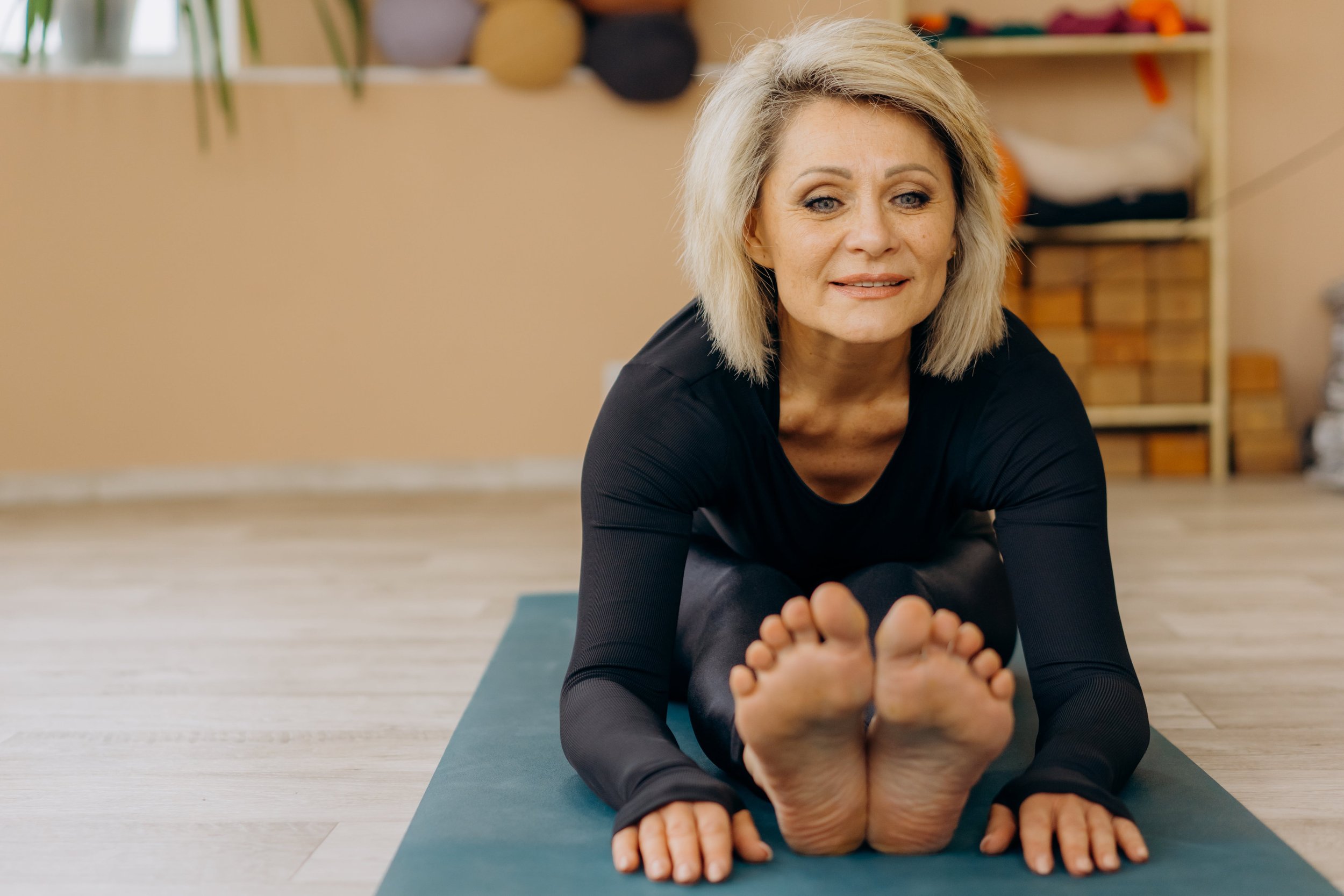
How Yoga Can Alleviate Arthritis Symptoms.
Arthritis, a condition marked by inflammation of the joints, can be a daily struggle for many. While there is no cure, the practice of yoga has emerged as a gentle yet effective approach to managing arthritis symptoms. In this blog post, we'll explore how yoga, with its mindful movement, gentle stretches, and emphasis on breath, can be a valuable ally in alleviating the discomfort and promoting joint health for individuals with arthritis.

Unveiling the 5 Therapeutic Benefits of Yoga
Yoga, an ancient practice that harmonizes the mind, body, and spirit, has transcended cultural boundaries to become a global beacon of well-being. Beyond its physical postures and meditative aspects, yoga offers therapeutic benefits that extend far into the realms of healing and self-discovery. In this blog post, we'll delve into five therapeutic benefits of yoga that contribute to overall well-being and vitality.

5 Yoga Stretches for Soothing Back Pain
Back pain, a common ailment in our modern sedentary lifestyles, can disrupt daily activities and hinder our overall well-being. While there are various remedies, yoga stands out as a gentle yet effective approach to alleviate back pain. In this blog post, we'll explore five yoga stretches designed to target and relieve tension in the back, promoting flexibility, strength, and lasting comfort.
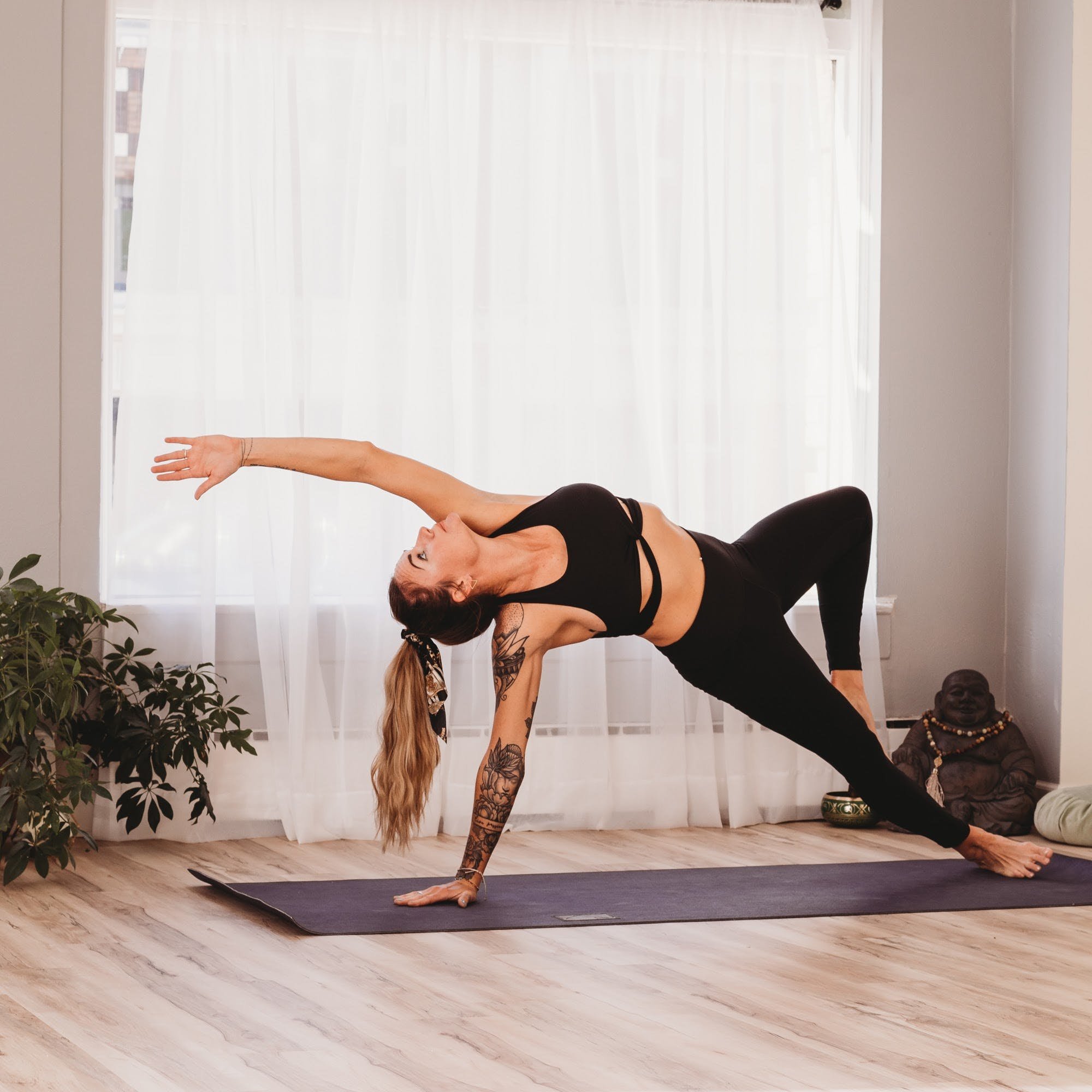
Igniting Strength and Vitality in Your Yoga Practice
In the dynamic realm of yoga, there's a pose that embodies strength, resilience, and a touch of exhilaration—Salabhasana, or Locust Pose. This invigorating backbend not only challenges the body but also unleashes a surge of vitality. Join us on an exciting journey into the world of Salabhasana as we uncover its incredible benefits and why it deserves a special place in your yoga repertoire.

